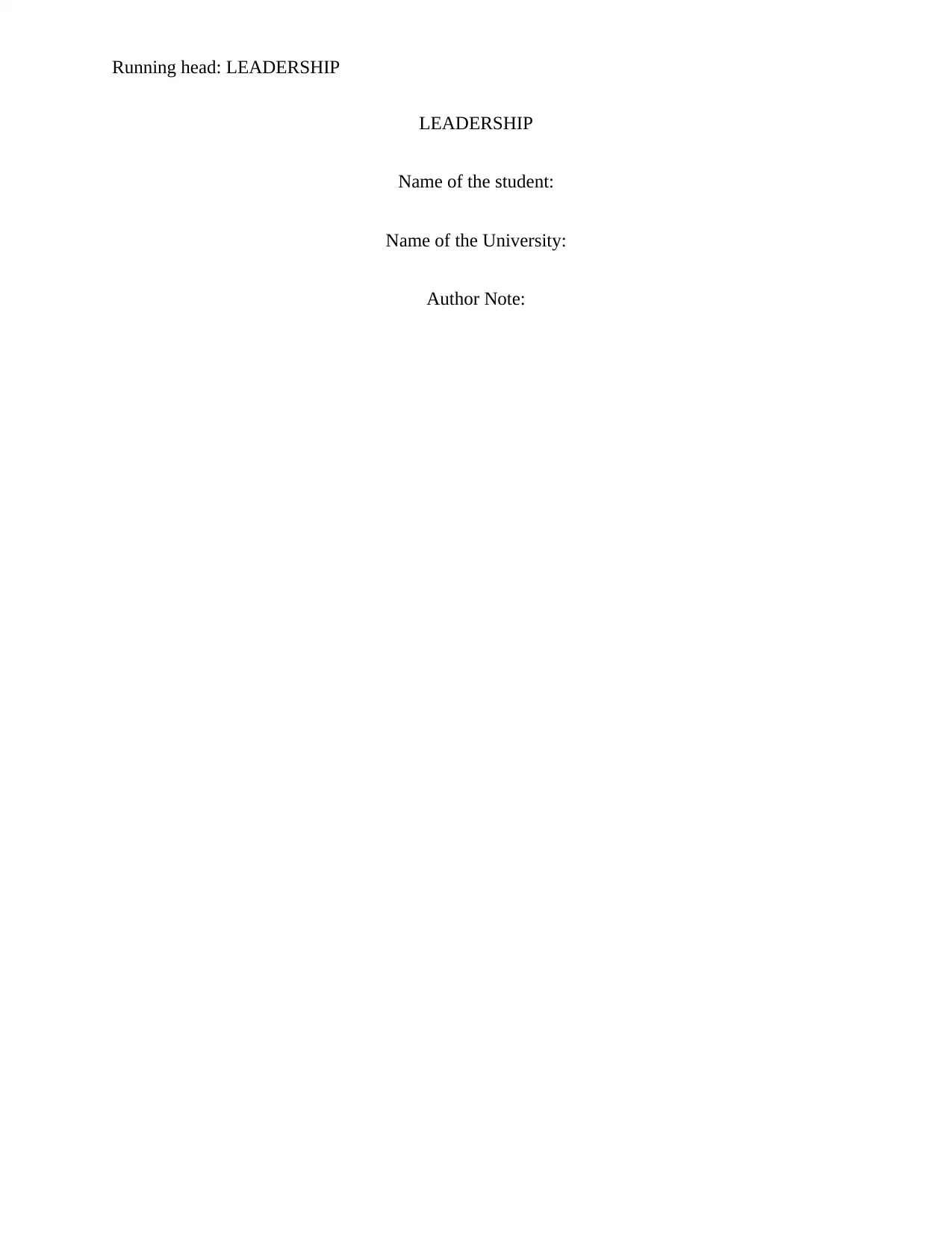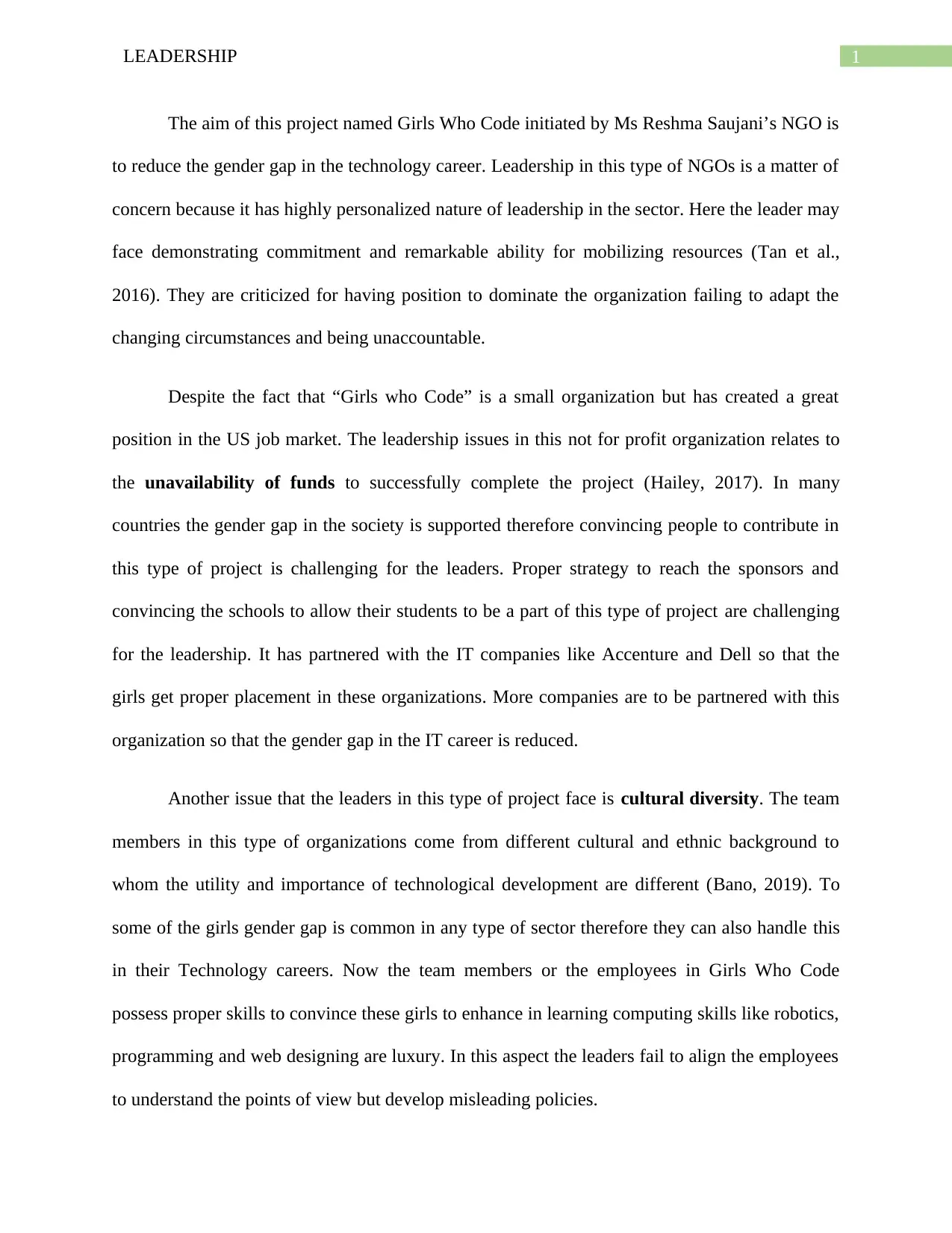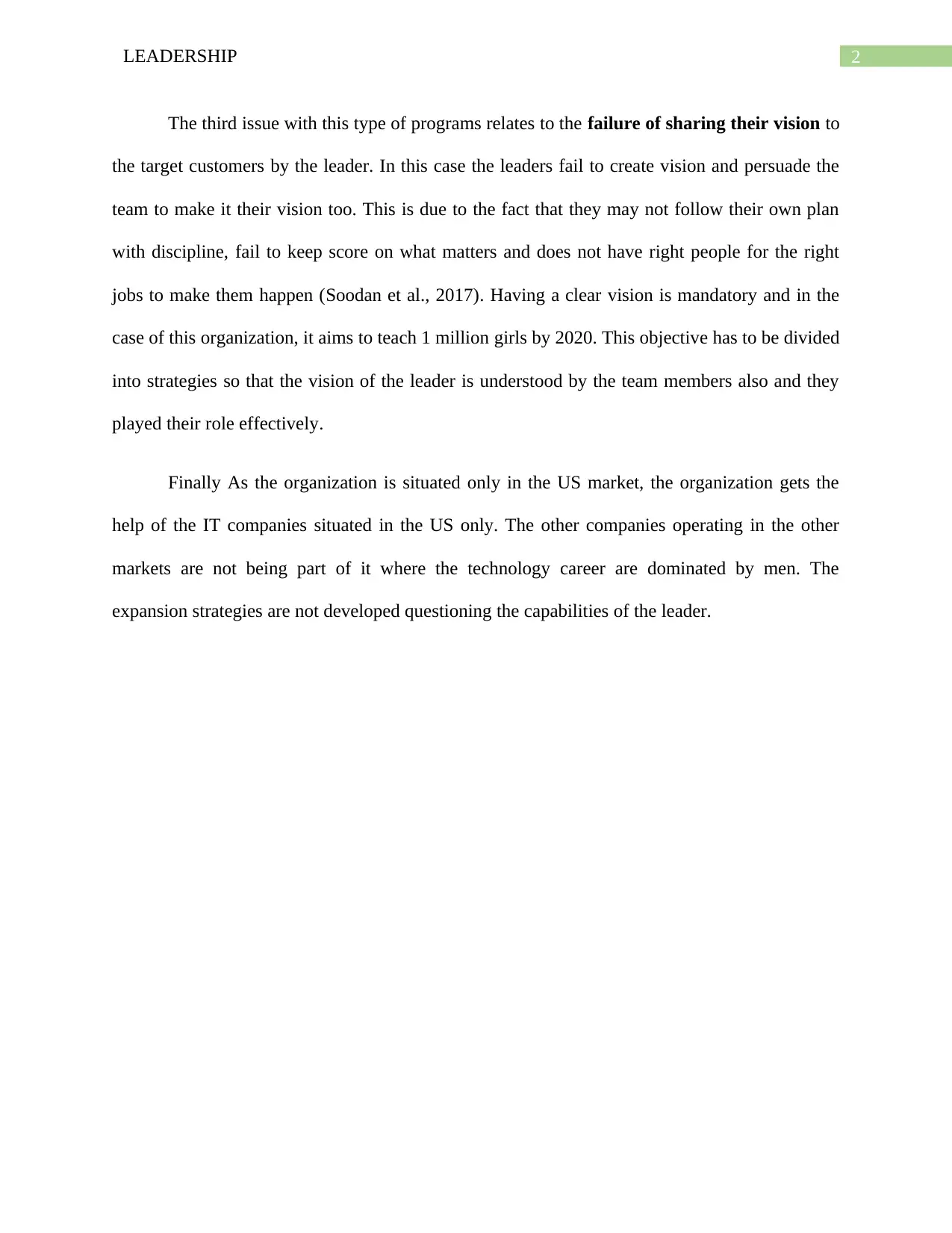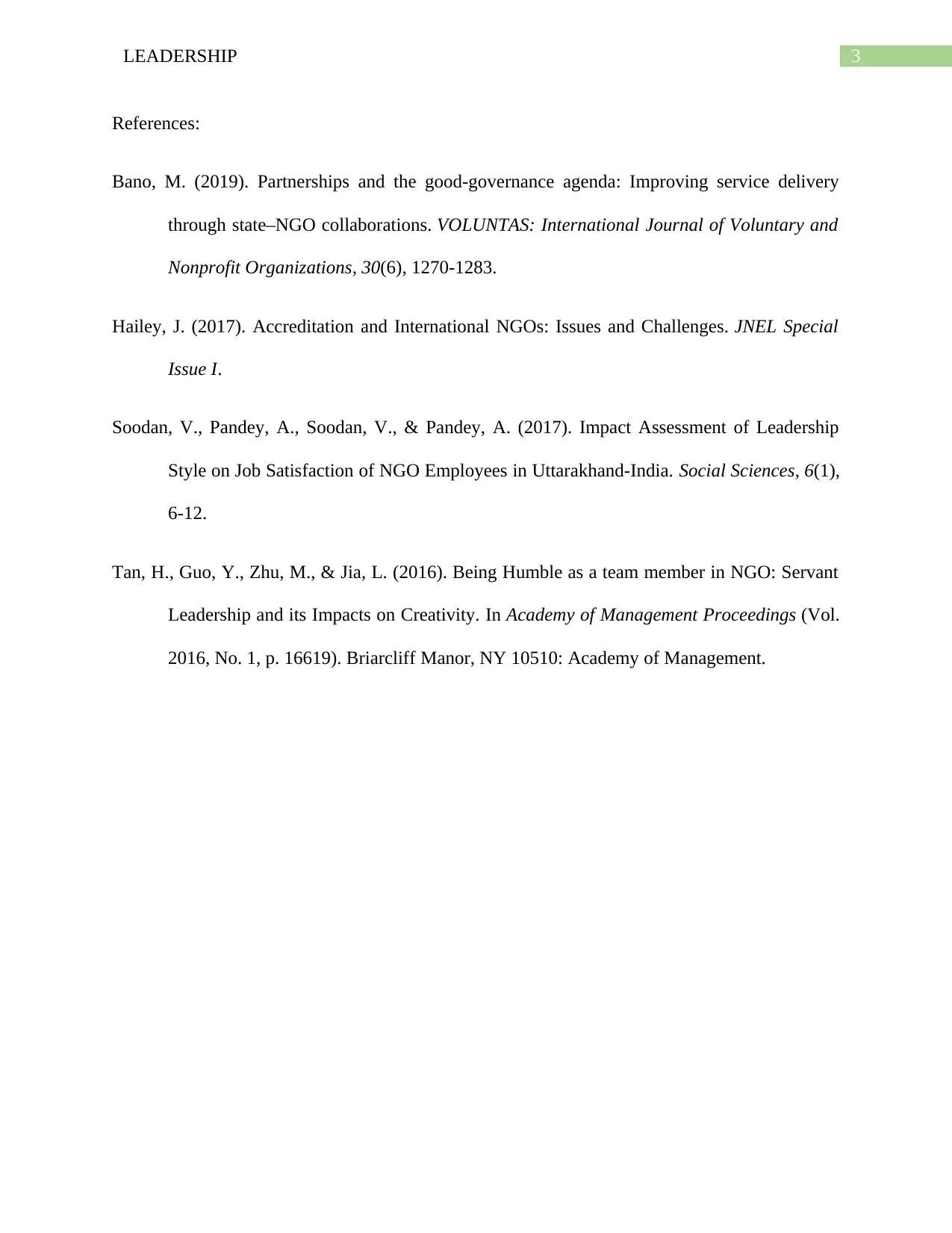Analysis of Leadership Challenges in the Girls Who Code Project
VerifiedAdded on 2022/08/28
|4
|767
|54
Report
AI Summary
This report examines the leadership challenges faced by the Girls Who Code project, an NGO aiming to reduce the gender gap in the technology sector. The analysis focuses on several key issues: the difficulty of securing funds and resources, the challenges of navigating cultural diversity within the team, and the importance of clearly communicating the organization's vision to both team members and target customers. The report highlights the need for effective leadership in mobilizing resources, adapting to changing circumstances, and ensuring accountability. The report also discusses the expansion strategies of the organization, as the project currently operates only in the US market. The project has partnered with IT companies like Accenture and Dell. The report emphasizes the importance of a clear vision, strategic planning, and effective team alignment to overcome these challenges and achieve the organization's goals.
1 out of 4











![[object Object]](/_next/static/media/star-bottom.7253800d.svg)